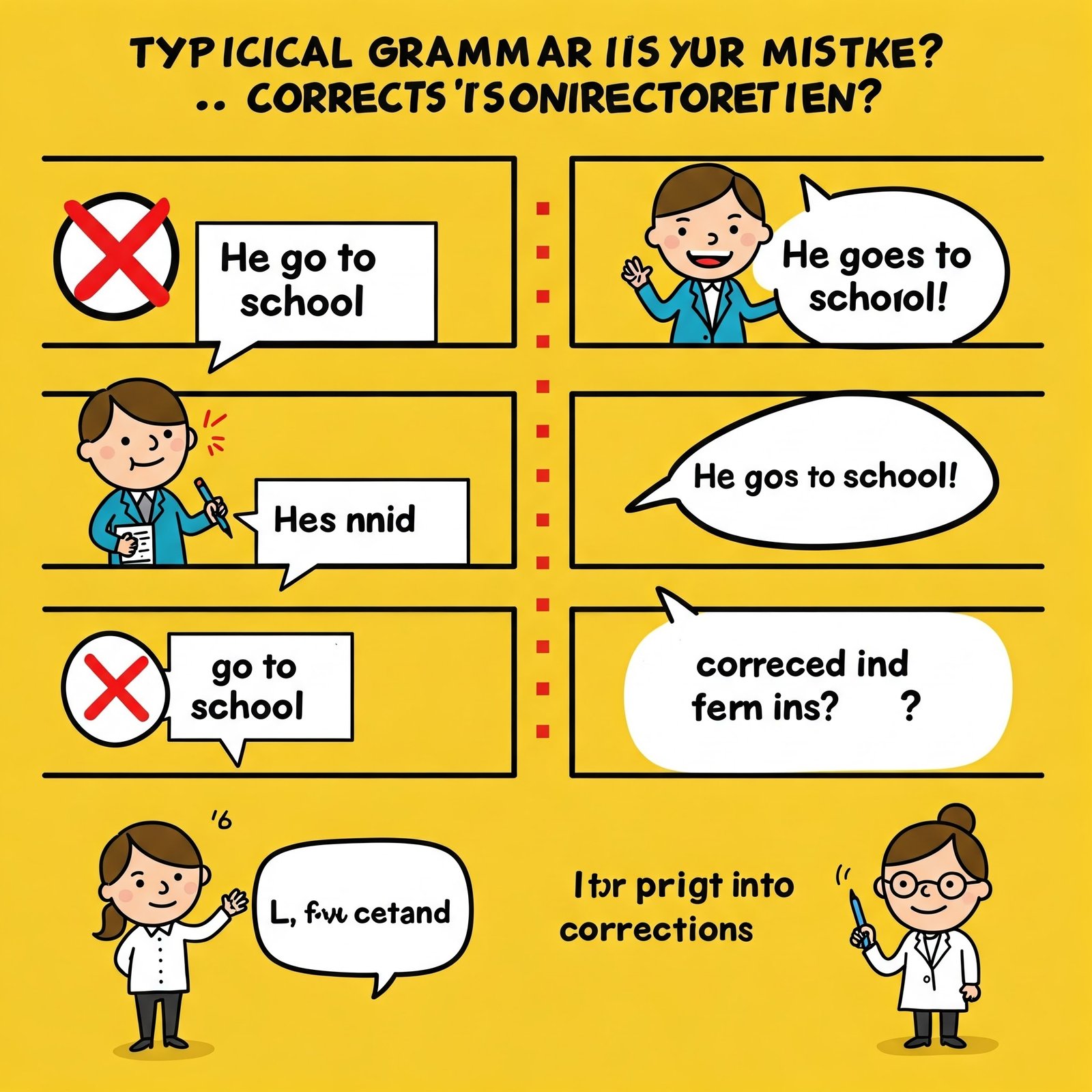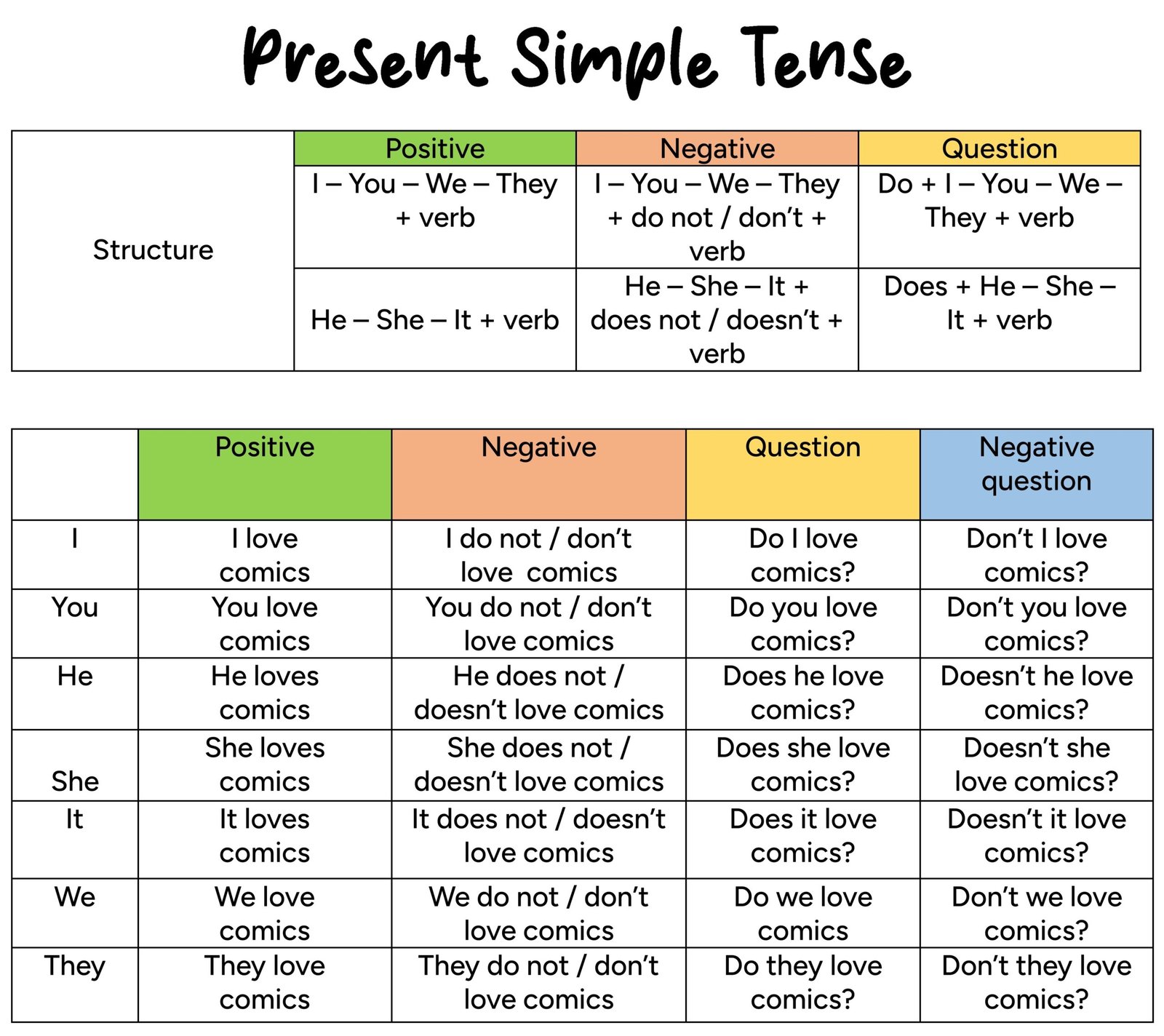
5 Common Mistakes Beginners Make in English (And How to Fix Them)
14 Apr 2025
Mistake 1: Incorrect Verb Conjugation in the Third Person Singular
One of the most frequent errors is forgetting to add the “s” or “es” when using he, she, or it in the Present Simple tense.
Example Mistake:
“She go to school.”
How to Fix It:
Always remember that when the subject is third person singular, you need to add an “s” or “es” to the base form of the verb.
Correct Version:
“She goes to school.”
Tip: Practice by writing simple sentences with various subjects to master this rule.
Mistake 2: Mixing Up ‘Do’ and ‘Does’ in Questions and Negatives
Beginners often struggle with forming negative statements and questions correctly, especially using “do” and “does.”
Example Mistake:
“He don’t like apples.”
How to Fix It:
When creating negative sentences or questions, use “do not” (don’t) for I, you, we, and they, and “does not” (doesn’t) for he, she, or it.
Correct Version:
“He doesn’t like apples.”
Tip: Remember that “does” is used for singular third-person subjects. Testing yourself with different subjects can reinforce this pattern.
Mistake 3: Overusing the Present Continuous Instead of the Present Simple
Learners sometimes use the Present Continuous tense (am/is/are + verb-ing) for routine actions or general truths, which should be in the Present Simple.
Example Mistake:
“I am eating breakfast every day.”
How to Fix It:
For habits or routines, use the Present Simple tense.
Correct Version:
“I eat breakfast every day.”
Tip: Identify cues in your sentences that signal habitual actions. Regular practice will help you choose the correct tense.
Mistake 4: Literal Translation from Your Native Language
Translating phrases directly from your native language often leads to awkward or incorrect expressions in English. The sentence structure and idiomatic expressions in English may differ significantly.
Example Mistake:
“I have 25 years.” (common in some languages)
How to Fix It:
Instead, use the natural English way of expressing age:
Correct Version:
“I am 25 years old.”
Tip: Immerse yourself in native content such as movies, podcasts, and conversations. Over time, you’ll start thinking in English and avoid literal translations.
Mistake 5: Misusing Prepositions
Prepositions in English (in, on, at, for, etc.) can be tricky because there are no strict rules for all cases. This often leads to confusion and errors.
Example Mistake:
“I will meet you in Monday.”
How to Fix It:
Focus on the common usage patterns of prepositions. In this case, the correct preposition for days is “on.”
Correct Version:
“I will meet you on Monday.”
Tip: Create flashcards for common prepositions used with time, places, and activities. Regular review and usage in sentences will help solidify your understanding.
Final Thoughts
Making mistakes is a natural part of learning any new language. The key is to be aware of these common errors and actively work to correct them through practice. Keep a journal of your mistakes, review them regularly, and soon you’ll see significant improvements in your fluency and confidence.
Remember, every mistake is an opportunity to learn and grow. Embrace the journey of language learning, and don’t be discouraged by setbacks—your persistence will pay off over time!
Happy learning and keep practicing every day!




